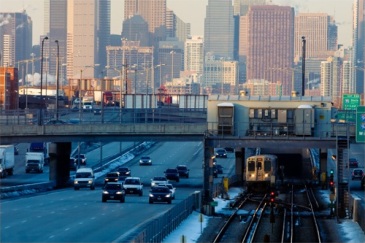CTA Promises More Alternate Trains, Shuttles For South Siders During Red Line Rebuild
By Chuck Sudo in News on Jun 11, 2012 8:45PM
The Chicago Transit Authority is going to great lengths to assure south side residents reliant on the Red Line that their commutes will be minimally affected by the five months the south branch of the line will be shut down for a complete rebuild next year.
When CTA made the announcement last week they said the 40-year-old branch was in such a state of disrepair that a complete shutdown was required, instead of working on the repairs on nights and weekends. The overhaul is expected to save the transit agency $75 million.
That's all well and good, but it's the alternate transportation plan—the train routes and shuttle services intended to get South siders who regularly use the Red Line to get to their destinations‐that left many scratching their heads. Here are the travel alternatives CTA has announced so far:
- Free shuttle buses with 24-hour service from 69th, 79th, 87th and 95th/Dan Ryan stations to the Garfield station on the Green Line (including express service from stations with free entry at Garfield for shuttle bus riders and a local, station-to-station shuttle from 63rd to 95th/Dan Ryan)
- Free rail entry for shuttle bus riders at Garfield on the Green Line
- 50 cent discounted bus rides on many South Side routes
- 24-hour Red Line service on Green Line tracks between Roosevelt and Ashland/63rd
- Expanded bus service on existing routes
Sorry, but this isn't much. Tribune transportation reporter John Hilkevitch said as much and asked CTA, Metra and the Regional Transportation Authority what else was being considered, noting the plan was "hastily drawn" and relied too much on shuttle buses to move an average of 250,000 passengers a day from closed Red Line stations to Green Line stations.
Hilkevitch posited this would be an ideal time to put in place an integrated fare policy to allow affected Red Line commuters to board Metra's Rock Island Line, for example, easier.
The response Hilkevitch received from Metra spokesman Michael Gillis may as well have been a no comment.
"We have plenty of time to work on this before next May."No, you don't.
It will be important to allow riders to transfer seamlessly between the CTA and Metra without being hassled about the different fares — a solution that has eluded (or been avoided by) the Chicago area's mass transit network for decades.
The RTA faces a Jan. 1 deadline to submit a fare-integration plan to the transit agencies for input, approval and implementation. The Illinois Legislature has set a 2015 deadline for the RTA system to implement common fare media, also known as a universal fare card, to be accepted by all three transit agencies.
To their credit last week, CTA officials quickly realized it will take time to get it all right, which is why they pushed for an initial meeting with Metra operations officials for this week, said CTA spokeswoman Molly Sullivan.
If Metra isn't being proactive about this—par for the course for them—CTA recognnizes the bad PR generated from this and is actively working on alternatives besides integrated fares. They're promising to boost train capacity and to run Red Line trains a little bit past Roosevelt so that some South side riders can still ride from, say, Bronzeville to points north without catching a shuttle. CTA also told Hilkevitch that what they've announced so far is a first draft and that, once the shuttle services begin next May, they'll be monitoring the progress and tweaking what isn't working to improve travel times.
For those of you wondering if this isn't going to happen on the North side, CTA president Forrest Claypool threw a gold glass of reality on that.
"I got news for people," Claypool said Tuesday on WBEZ's Afternoon Shift. "The north Red Line has to be rebuilt as well. And we're not that many years away from that happening."Claypool said he would not want to completely shut down the North Side Red Line.
He said the Red Line is longer on the North Side than on the South Side and construction would likely be staggered, rather than have the entire stretch closed at one time.
"There clearly will be disruptions at that time, but at the end of the day years from now, assuming we get the proper federal support for that project, you will have literally a brand new railroad from the far northern suburbs to the very southern portions of the City of Chicago," he said.
